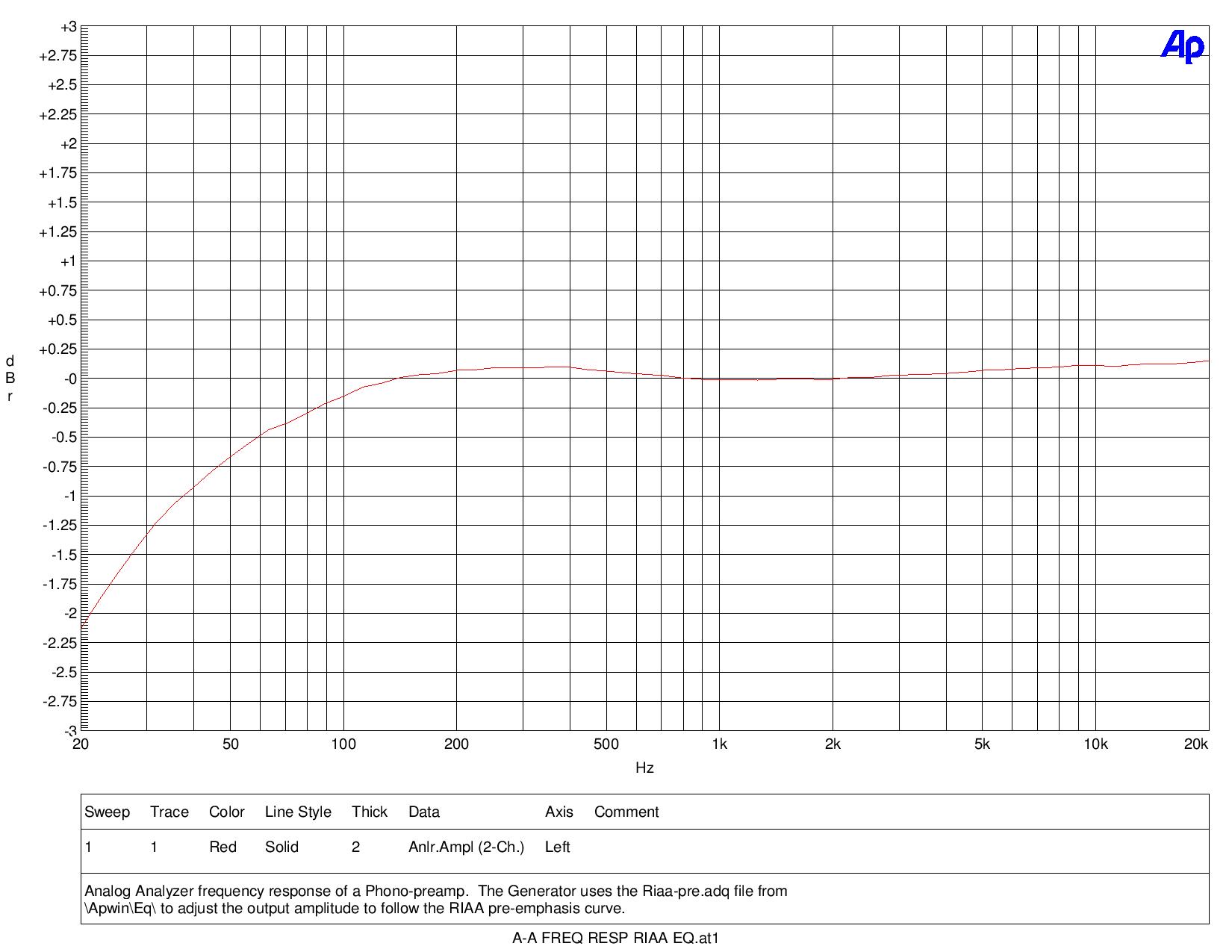Arkless Electronics
Trade: Amp design and repairs.
Very likely some of the difference in bass region was caused by Paradise RIAA inaccuracy , I'm certain Jez calculated and executed almost flat RIAA.
Accurate to within 0.1dB and flat to <1Hz.
Very likely some of the difference in bass region was caused by Paradise RIAA inaccuracy , I'm certain Jez calculated and executed almost flat RIAA.
Paradise if I remember has a rise of 0.6-0.8dB @20Hz obviously depending on accuracy of RIAA componentsAccurate to within 0.1dB and flat to <1Hz.
Paradise if I remember has a 0.6-0.8dB @20Hz obviously depending on accuracy of RIAA components
I believe this is deliberate to give a bit more bass "oomph" than is strictly accurate. I have worked out VERY accurate networks for the Paradise... subject to the possible small discrepancy between measured and simulated output impedance of transconductance section of course.
The Arkless 640P in all variants uses very high quality op amps and hence computer simulation and real life are the same to within the tolerance of the components
Looks almost flat to me ,with parallel 147k would be even closer , is that Benz LPS? with 38ohm impedance damping with 120R or 220R loading would explain bit more bass .I build them for customers according to Joachims 0.4db funky house curve.
My own is 9k9, 73k7, 32.1nF, 11.05nF which is pretty damn flat, and I have two sets of loading plugs which I swap according to taste, 120r and 220r.
It's pointless talking about riaa accuracy when every paradise user uses plug in loading to suit their taste. I'm not going to dictate how they should enjoy their music, I'm happy to serve them up what they like.
Obviously with no loading or adjustment in a DrT circuit one should shoot for nominally flat in the design as jez has.
Comparing cd to vinyl on the paradise theres nowt in the bass on the tracks I have that appear to be the same mastering. With jezs stage vs cd there a decent roll off on the vinyl. No doubt that's just an artifact of the Benz LPs crazy high impedance.

Am I right in saying that the new Arkless phonostage is electrically similar to this one?
In short, yes.
As does the Ryan Sound Labs design and the Dynavector P75 (when in Dr T* mode).
* I think Dynavector are calling this PE (for Phono Enhancer) mode now.
Many of us used to think that the Naim K boards were fantastic. Below is the RIAA response curve for one of those boards. As you can see, the bass response is not great below 100Hz. Nowadays even without doing hand-selecting of the RIAA components, it's fairly easy to use 1% resistors and even buy 2.5% capacitors and stay within +/- 0.3db all the way down to 20 Hz. Doing better than that, I agree, is a matter of personal taste.

Some of us were playing around with transimpedance MM phono over on Vinylengine many years ago, I was using a small series resistor to pad the coil to enough resistance to get the 75 us time constant with the coil inductanceI prefer really to use either the correct technical term of transimpedance amplifier or just call it a current input phono stage. I used the term "Dr T" in the title as many will recognise the term and hence it may create further interest but I don't see why DV should get any credit for a bog stock dead simple text book idea that has been used for remote control receivers since the year dot....
